Easter in Teișani
Această reflecție asupra sărbătorilor pascale a fost pregătită în comun de Josué și Gertrudis, voluntarii noștri din Spania din cadrul proiectului Discover Teișani. Tradus de Alex Popa.
Chiar dacă România face parte din Europa și în unele aspecte nu atât de diferită de țara noastră, in același timp ai senzația de a fi într-o realitate ieșita din comun. Ca exemplu, odată cu Paștele întâlnim – cea mai mare sărbătoare creștină – sentimentul este că probabil ați mai văzut un lucru asemănător, dar este în același timp unul deosebit, deoarece biserica de aici este o biserica ortodoxă, se aseamănă celei catolice, care este cea cu care noi suntem obișnuiți. Aceasta este prima noastră experiență cu partea necunoscuta de noi a creștinismului.Am avut oportunitatea sa ne bucuram pentru prima oara de Pastele Tradițional Romanesc in satele Teișani si Olteni. Am fost anunțați ca aici festivitatea Paștelui este urmat de vechiul calendar ortodox, asta înseamna ca anul acesta, Duminica Învierii a fost situata pe 25 aprilie.
Prin urmare, este un lucru în comun să vedem cum familiile se pregătesc pentru această zi prin fierberea ouălor și prin colorarea lor cu vopsea specială pentru coajă ouălor.Am descoperit procesul alături de un voluntar local care ne-a explicat că vopsirea ouălor poate fi realizată și prin utilizarea cepei. Alegerea culorii roșii este cea mai comună, deoarece evocă sângele lui Isus Hristos.
Joia, vinerea și sâmbătă, înainte de Duminică Învierii, are loc o slujba dedicată Paștelui. Joi, liturghia este mult mai lungă decât de obicei, preotul citește cele 12 povești ale Evangheliei, câte unul pentru fiecare apostol. Am luat parte la această liturghie și a fost interesant cum a trebuit să “reînvățăm” procesul bunelor maniere din biserica datorită faptului că sunt total diferite de cele pe care le urmăm în țară fiecărui dintre noi. Din fericire am avut un localnic dornic cu noi explicând tot ceea ce aveam nevoie să știm pentru nu arată prea mult străini ;). La final, noi și restul oamenilor am primit o sticlă de suc de portocale pentru această ocazie excepțională.
Cea mai impresionantă zi pentru noi a fost sâmbătă. La începutul liturghiei, care începe în jurul orei 12 noaptea, oamenii cântă și împart focul lumânărilor pentru a le aprinde, începând cu lumânarea mare pe care o ține preotul. După un timp, oamenii merg la cimitir cu lumânările lor și le lasă acolo. Este momentul să petrecem câteva minute amintindu-ne de strămoșii lor care au murit. De dată această în cimitir merg să își amintească de oamenii care au fost aproape de ei, însă aici nu mai este vedere doar sărbătoarea de Paști cum suntem obișnuiți noi în Spania. Chiar și pentru unii români cu care am vorbit, care nu sunt din comună, este curios. În plus, putem spune că rezultatul merită văzut și este locul unde ne punem eforturile pentru a surprinde magia acestui moment, la biserica.
Am insotit o familie in cimitirul Teișani în acel moment. Încă auzeam sunetul oamenilor cântând în biserică. Apoi, ne-am întors și slujba s-a terminat pe la 02:30. Cu toate acestea, slujba obișnuia să se termine mai târziu, dar de data aceasta pentru măsurile Covid au terminat totul putin mai devreme.
De-a lungul nopții ne-am dat seama de faptul că nu văzusem cu adevărat comună Teișani noaptea până atunci din cauza stării de urgență. În această zi Teisani, a fost aglomerat dacă l-am compară cu restul zilelor ale acestui an. A fost frumos să vedem tineri stand în jurul nostru vorbind pentru a profită de ocazia specială care ne aduce aici.
A fost cu adevărat impresionant și să rămânem în cimitirul din Olteni mai târziu, acolo nu era nimeni și era foarte liniște. De la această liturghie și timp de 40 de zile, este obișnuit că oamenii să se întâmpine cu «Hristos a Înviat!» și ei răspund cu «Adevărat un înviat!».
Even if Romania is part of Europe and in some aspects not that different from our country, at the same time you have the feeling of being in a different reality. For example, with Easter – the biggest Christian celebration – the feeling is that you have seen this before but it is at the same time different since the one here is the Orthodox churchunlike the Catholic one which is the one we are used to. This is our first experience with the astern part of the Christianism.
We had the opportunity of enjoying Romanian Easter for the first time in the villages of Teișani and Olteni. We have been informed that Easter festivity follows here the old Orthodox calendar, which means that this year the Resurrection Sunday, the most important day for this fest, was on the 25th of April.

Therefore, it is common to see how families prepare for that day by dying boiled eggs with special ink for the shell of the eggs. We discovered the process with a local volunteer that explained to us that the dying can also be made with onions. The red choice for the eggs is the most common because it evokes the blood of Christ.

On Thursday, Friday and Saturday before the Resurrection Sunday, there are special mass. On Thursday, the mass is longer than usual, the priest reads twelvefold of the gospel, one for each apostle. We visited that mass and it was interesting how we had to “relearn” the process and manners in the church due to they are different from the ones we used to follow in our country. Luckily we had a local with us explaining all what we needed to know not too look too much like foreigners ;). At the end, we and the rest of people received a bottle of orange juice for this exceptional occasion.
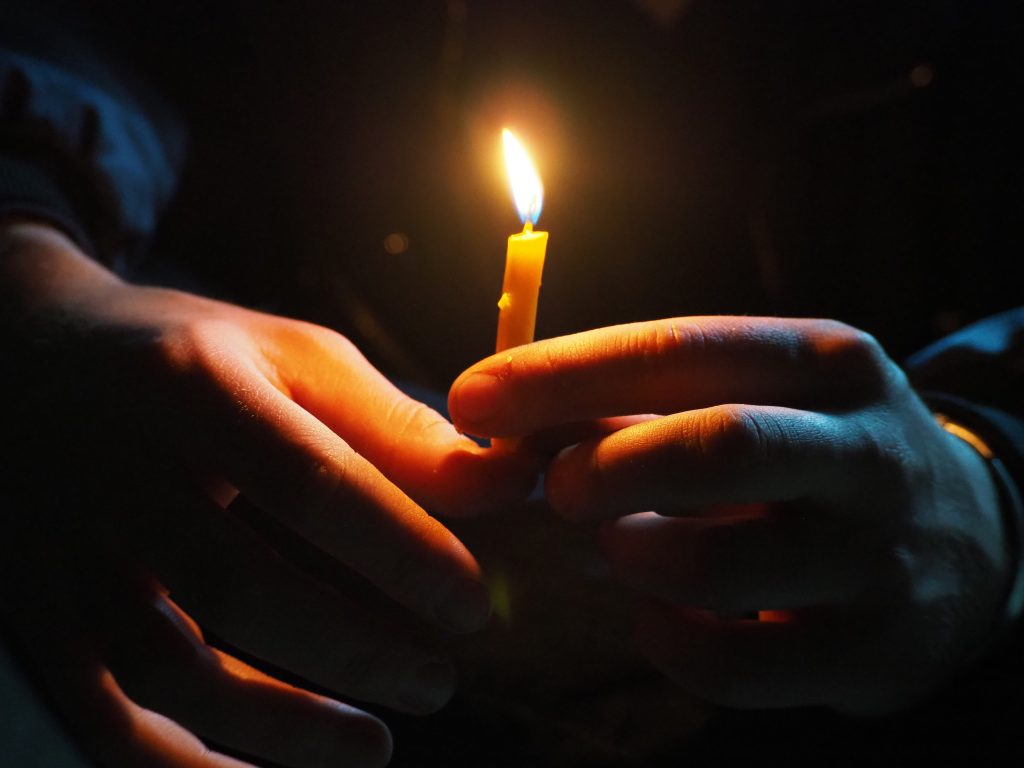
The most impressive day for us was Saturday. At the beginning of the mass, which starts about 12h in the night, people sing and share the fire of their candles to light them up, starting with the big candle that the priest holds. After a while, people go to the cemetery with their candles and they let them there. It is the moment to spent some minutes remembering their ancestors who passed away. This time in the cemetery to think about the people who were close to us but are not anymore is not sight in the Easter fest that we are used to in Spain. Even for some Romanians who we have talked with but are not from the commune it is curious. Besides, we can say that the result is worthwhile to see, and it is where we put our efforts to capture the magic of this moment.
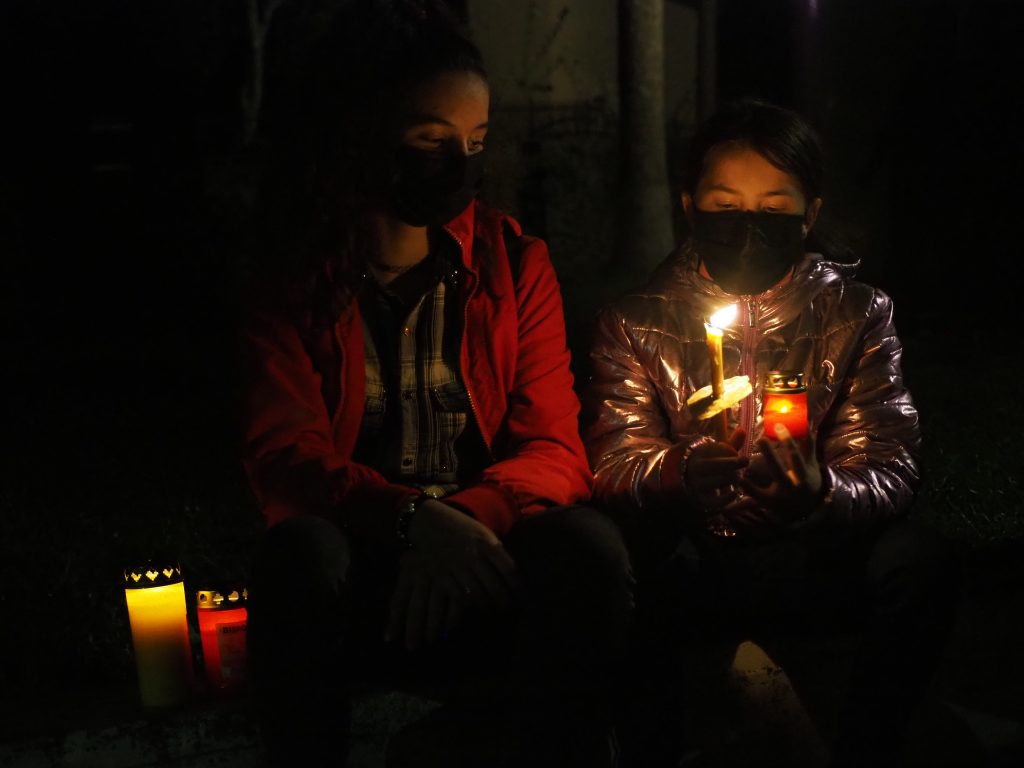
We acompannied a family to the Teișani’s cementery in that moment. We could hear still the sound of people singing in the church. Then, we came back and the mass finished about 2:30h. Nevertheless, the mass used to finish later, but this time for Covid measures they finished earlier.
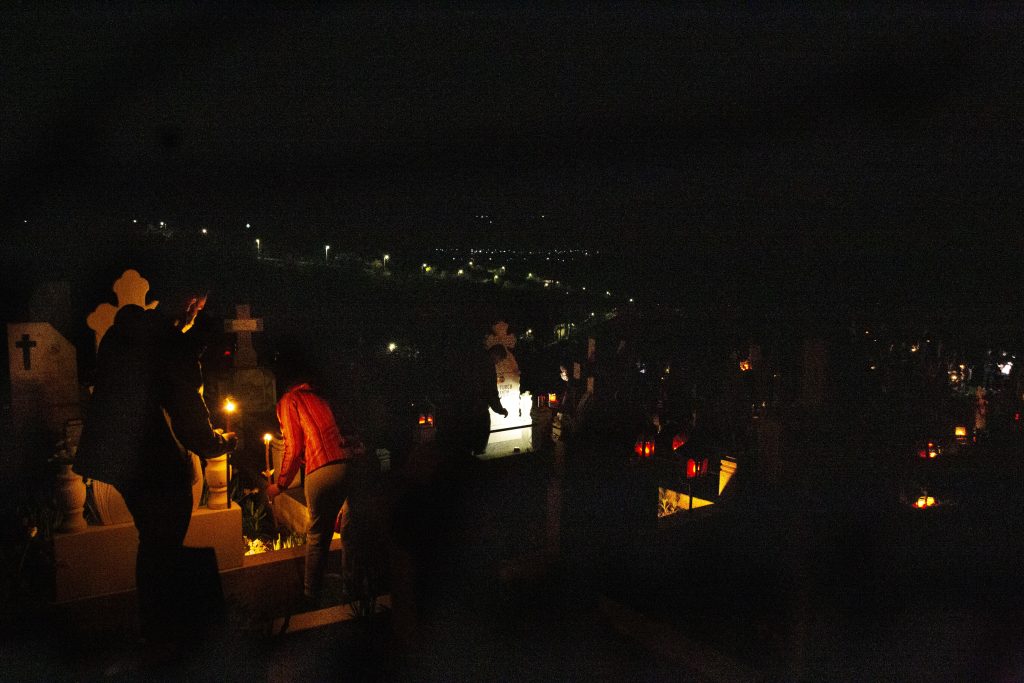
Along the night we realised the fact that we had not really seen Teișani at night until then because of the curfew. This day Teisani was crowded if we compare it with the rest of this year. It was nice to see young people hanging around taking profit from the special occasion that brings us here.

It was really impressive also to stay in the cementery of Olteni later, were there was no one and it was really quiet. From this mass and during 40 days, is common that people greets themselves with «Hristos a Înviat!» (Christ has risen) and they answer «Adevărat a înviat!» (Indeed he has risen).
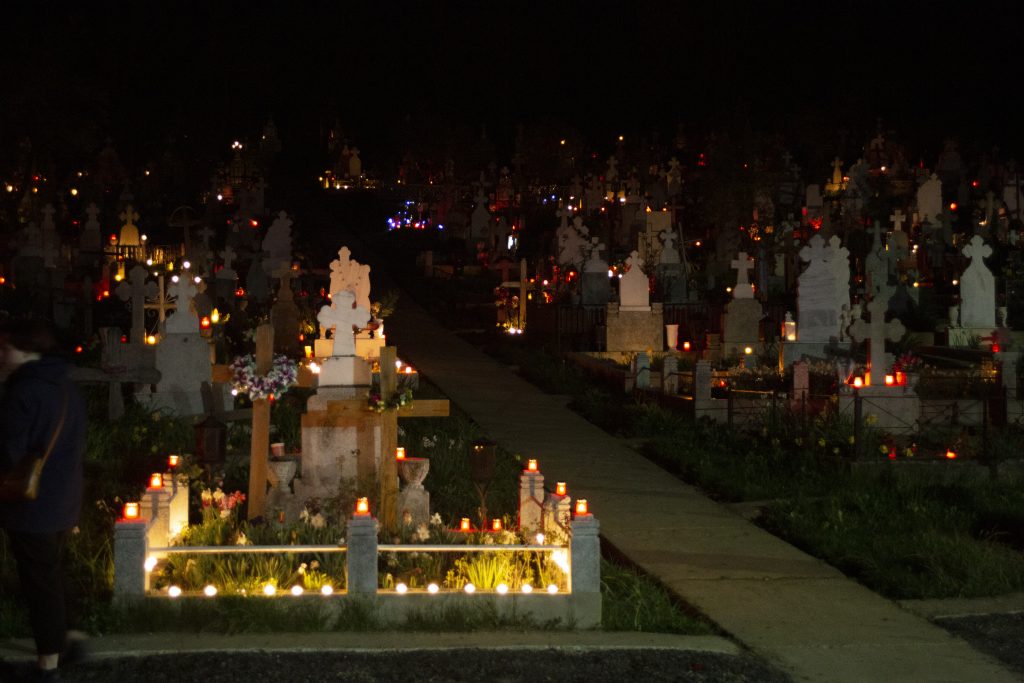

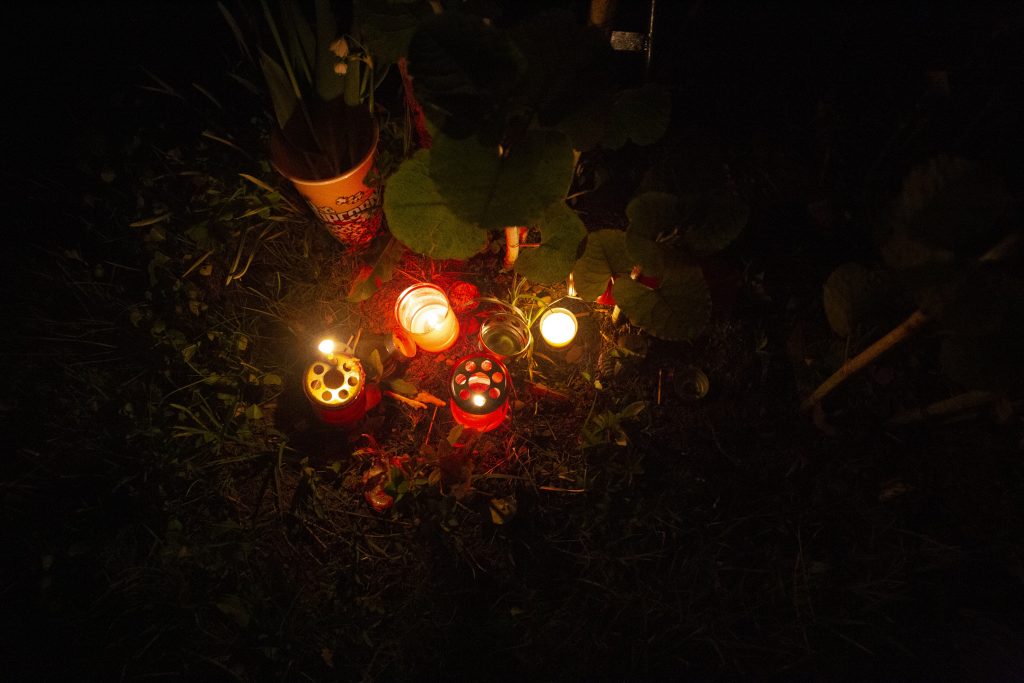

About the author